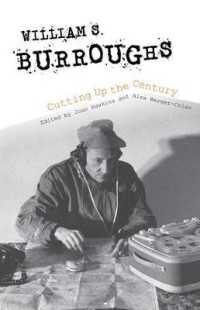- ホーム
- > 洋書
- > 英文書
- > Psychology
Full Description
The Scharffs draw from their object relations therapy with individuals, families, and couples recovering from trauma and abundance of relevant clinical examples described in tehir characteristically personal and vivid style. Their treatment approach, influenced by Fairbairn, Klein, and Winnicott, is respectful of the patient's experience. They advise avoiding premature interpretations tha impose their own reality on patients because this traumatizes them just as their abuser did. In order to work well with these traumatized people, the clinician must be able to tolerate ambiguity and sustain longterm therapy, for it takes the patience of waiting and wondering to recover deeply repressed memories, explore them thoroughly, and evaluate their meaning and importance for the patient. Object relations theory offers a bridge between individual and societal experiences of trauma and prepares the way for a less dissociated response to trauma issues among the mental health professions and their psychotherapy literature.
Contents
Chapter 1 1. The Traumatic Continuum Chapter 2 2. Post-Trauma, Multiplicity, and Childhood Memory Studies Chapter 3 3. Freudian and Object Relations Perspectives Chapter 4 4. From Traumatic Splits in the Self to Multiple Personality Chapter 5 5. The False Memory/Recovered Memory Debate Chapter 6 6. Repression and Dissociation Revisited Chapter 7 7. The Fate of Freud's Seduction Hypothesis Chapter 8 8. An Object Relations Re-Analysis of Dora Chapter 9 9. Focal Trauma in an Adult Couple Chapter 10 10. Repetition of Trauma in the Transference Chapter 11 11. Mother-Daughter Incest Chapter 12 12. Primal Scene Inclusion and Father-Daughter Incest Chapter 13 13. Recall of Childhood Sexual Trauma and Object Relations Technique Chapter 14 14. Trauma in Termination Chapter 15 15. Putting It Together: Theory and Technique in Trauma








